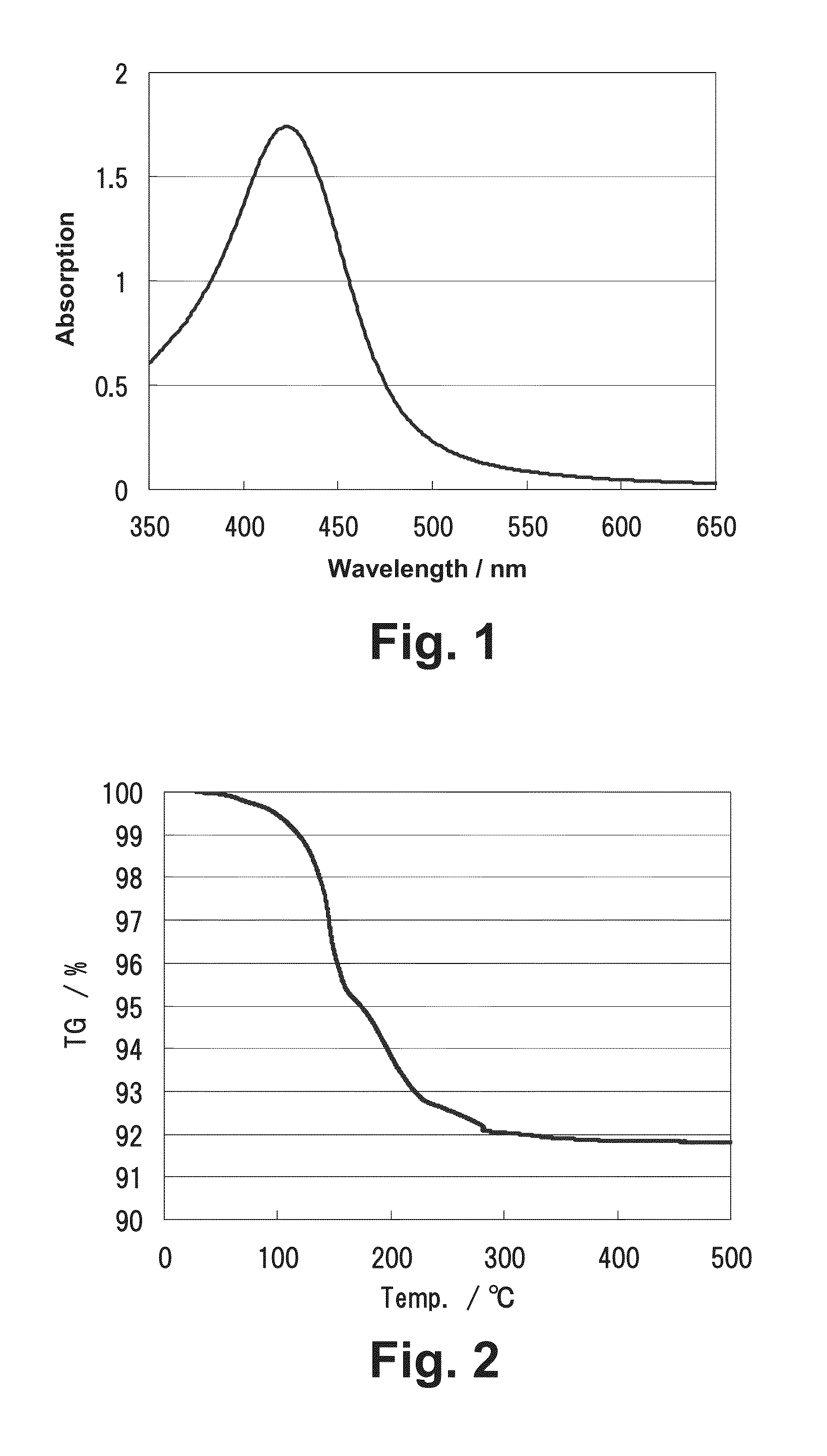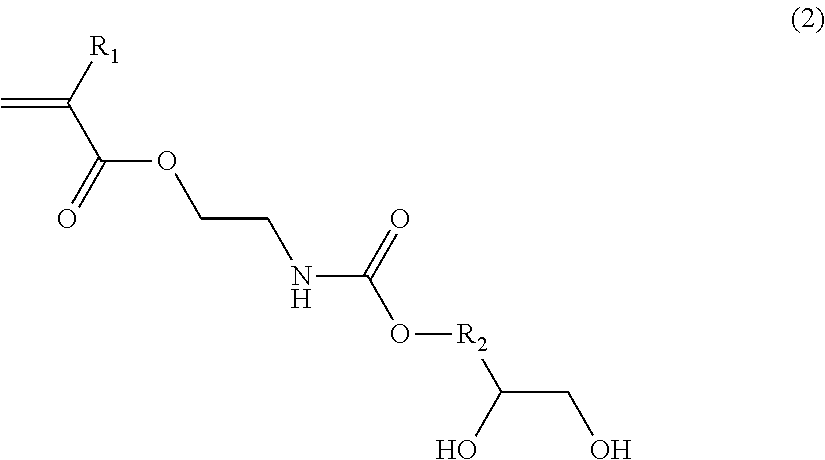Silver nanoparticles, method for producing same, silver nanoparticle dispersion liquid, and base provided with silver material
a silver nanoparticle and silver nanoparticle technology, applied in the field of silver nanoparticles, can solve the problems of hard to achieve electrical conductivity comparable to bulk silver, originating residual impurities, etc., and achieve excellent electrical conductivity, excellent dispersion stability, and low heat resistance
- Summary
- Abstract
- Description
- Claims
- Application Information
AI Technical Summary
Benefits of technology
Problems solved by technology
Method used
Image
Examples
examples
[0078]The present invention will now be explained with reference to Examples, which are not intended to limit the present invention.
[0079]In the following Examples, silver elements mean the silver elements in a silver compound.
synthesis example
[0080]Each of polymers (C1) to (C10) was obtained by a routine method from a monomer composition of monomers (c1) and (c2) as shown in Table 1. The obtained polymers were used in the following Examples and Comparative Examples.
[0081]The weight average molecular weight of each polymer was determined under the following conditions in the following measuring apparatus.
[0082]Measuring apparatus: TOSOH BUILD-UP GPC SYSTEM (Detector: RI)
[0083]Column: TSKgel G3000PWXL+TSKgel G5000PWXL (manufactured by TOSOH CORPORATION)
[0084]Eluent: water / ethanol=7 / 3 (v / v)
[0085]Measurement conditions: flow rate: 0.5 ml / min.; column oven temperature: 40° C.; reference material: polyethylene oxide
TABLE 1Monomer composition (molar ratio)Weight averageMonomer (c1)Monomer (c2)molecular weightPolymerGLYMOUBMASMAN-MAAmStMBEHBAGEMwMw / MnPolymer (C1)602020250003.2Polymer (C2)602020190003.5Polymer (C3)602020220003.4Polymer (C4)602020170003.5Polymer (C5)602020260003.6Polymer (C6)602020225003.8Polymer (C7)801010285003....
example 1-1
Preparation of Silver Nanoparticles
[0086]As silver compound (A), 3.6 g (10.0 mmol) of silver acetonedicarboxylate, 7.8 g (60.0 mmol, 3 mole equivalent of the silver elements) of 2-ethylhexylamine, and 36.0 g (10 times the weight of the silver compound) of toluene were mixed to obtain a faint yellow transparent solution. To this solution, 11 mg (0.5 parts by mass with respect to 100 parts by mass of the silver elements) of polymer (C1) was added. Then 1.4 g (30.0 mmol, 1.5 mole equivalent to the silver elements) of formic acid was slowly added dropwise, and the reaction liquid was stirred at room temperature (25° C.) for 1 hour to obtain silver nanoparticles.
[0087]The silver nanoparticles thus prepared were evaluated as follows. The results are shown in Table 2.
[0088]The absorption spectrum was analyzed in UV-VIS Spectrophotometer (manufactured by JASCO CORPORATION), and the maximum absorption spectrum derived from the surface plasmon resonance of the silver nanoparticles was observe...
PUM
| Property | Measurement | Unit |
|---|---|---|
| temperatures | aaaaa | aaaaa |
| temperature | aaaaa | aaaaa |
| temperature | aaaaa | aaaaa |
Abstract
Description
Claims
Application Information
 Login to View More
Login to View More - R&D
- Intellectual Property
- Life Sciences
- Materials
- Tech Scout
- Unparalleled Data Quality
- Higher Quality Content
- 60% Fewer Hallucinations
Browse by: Latest US Patents, China's latest patents, Technical Efficacy Thesaurus, Application Domain, Technology Topic, Popular Technical Reports.
© 2025 PatSnap. All rights reserved.Legal|Privacy policy|Modern Slavery Act Transparency Statement|Sitemap|About US| Contact US: help@patsnap.com



